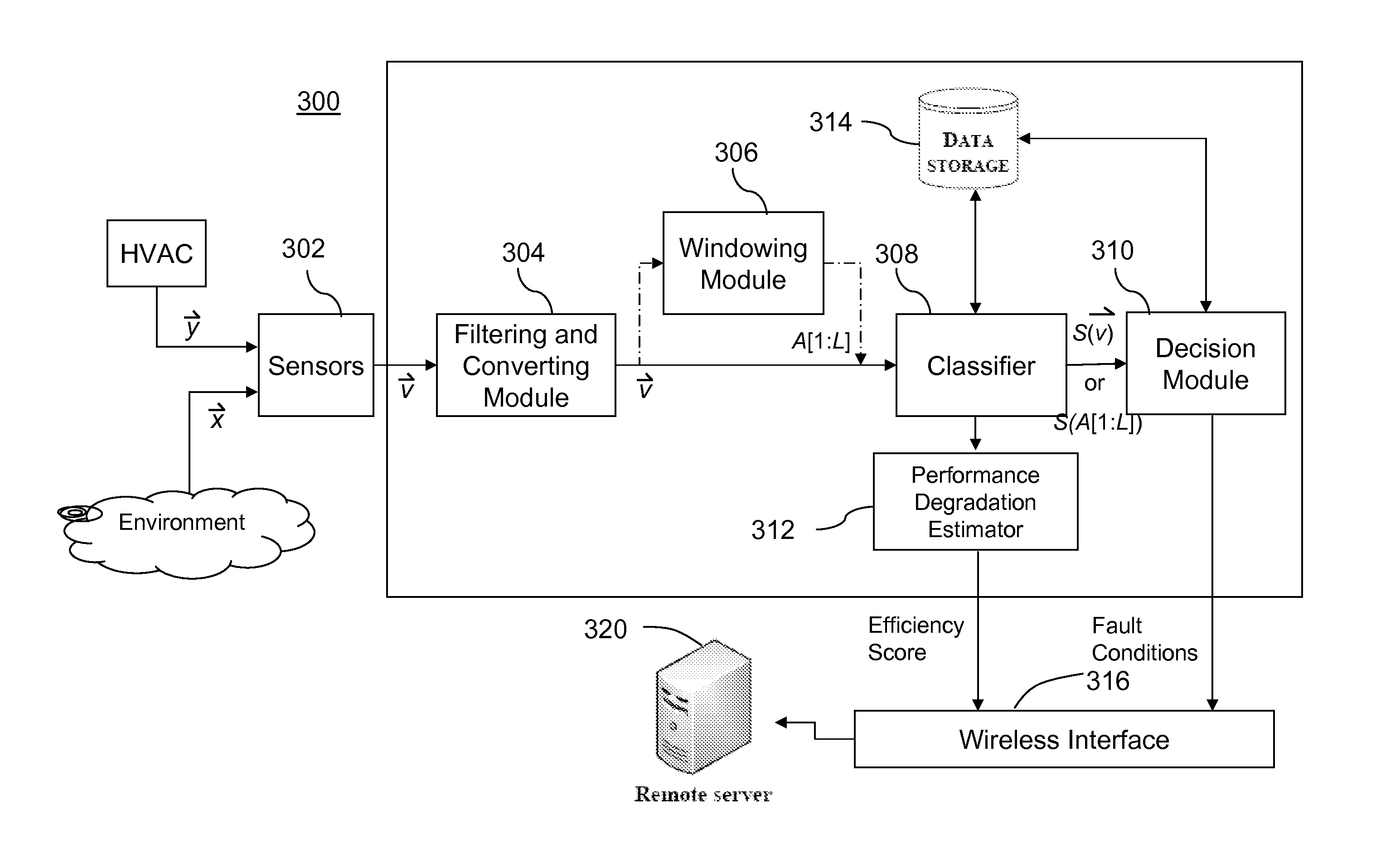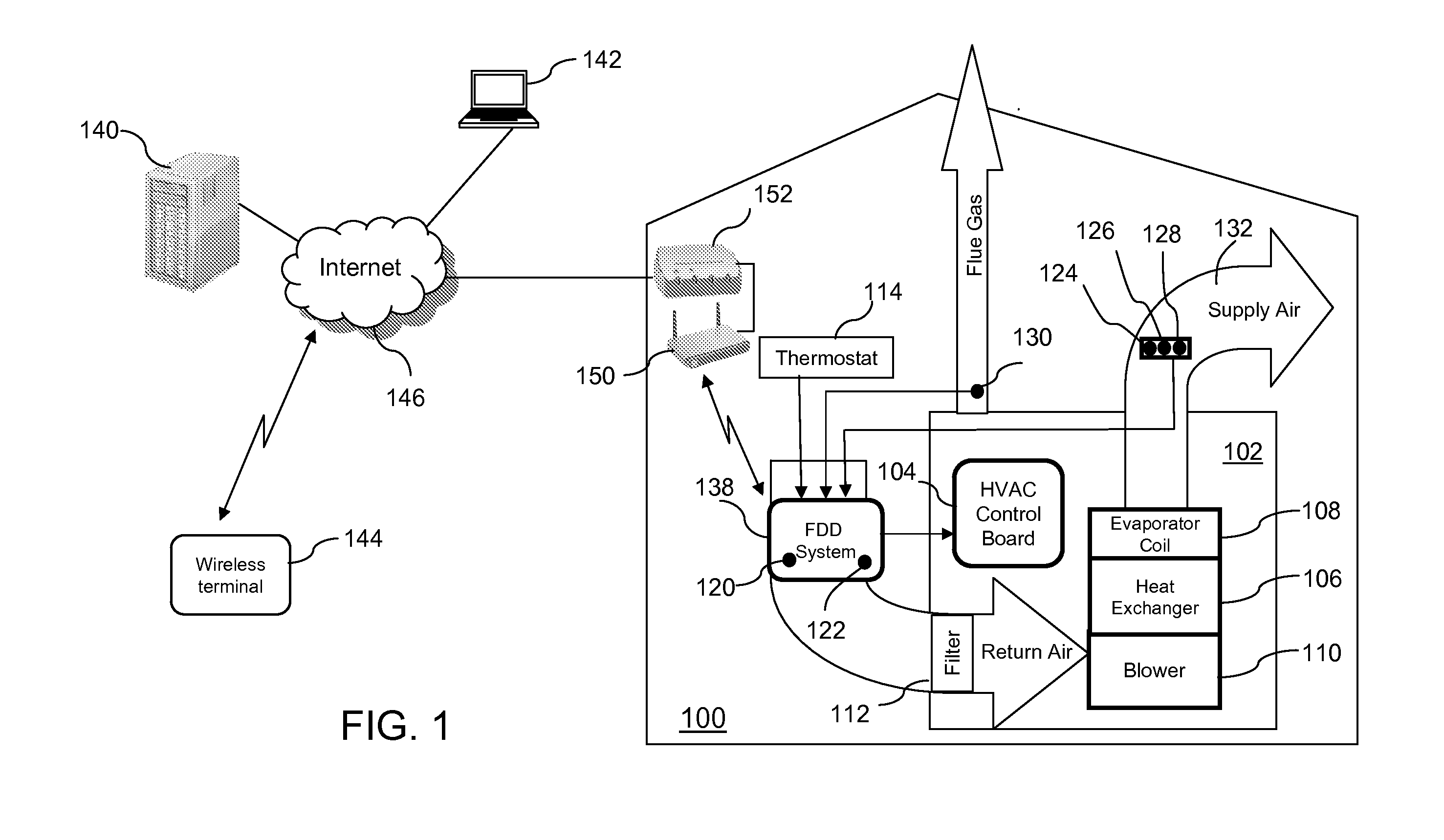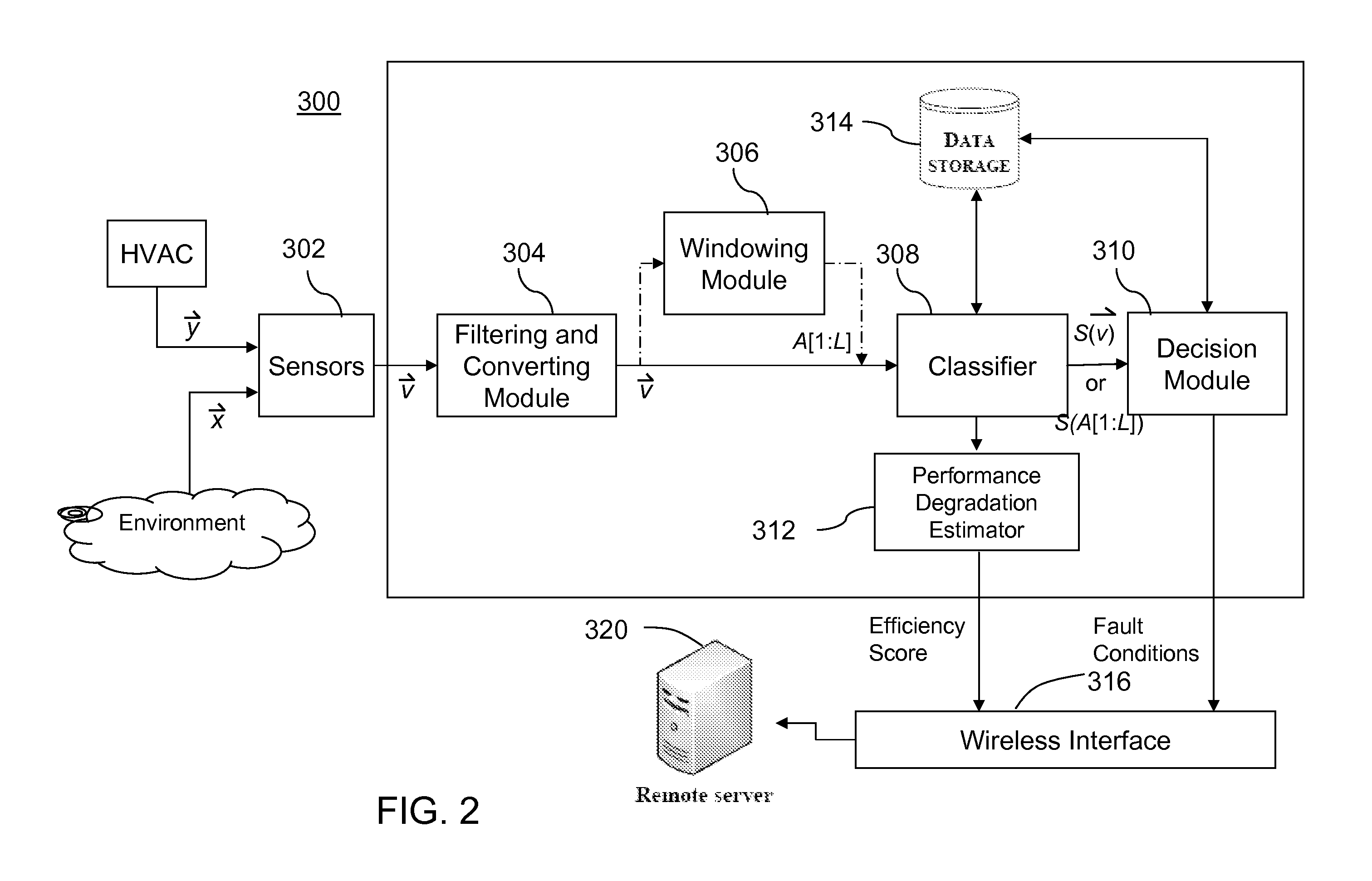Intelligent system and method for detecting and diagnosing faults in heating, ventilating and air conditioning (HVAC) equipment
a technology for heating, ventilation and air conditioning equipment, applied in the field of intelligent system and method for detecting and diagnosing faults in heating, ventilating and air conditioning (hvac) equipment, can solve problems such as % loss in efficiency, large amount of energy consumed throughout the world, and significant waste of energy
- Summary
- Abstract
- Description
- Claims
- Application Information
AI Technical Summary
Benefits of technology
Problems solved by technology
Method used
Image
Examples
Embodiment Construction
[0040]A high-level system diagram of the intelligent FDD system for HVAC equipment, in accordance with one embodiment of the present invention, is shown in FIG. 1. HVAC equipment 102 for heating, ventilating and air conditioning is located in a substantially enclosed building, for example, a house 100. The HVAC equipment 102 is a typical system which may include a control board 104, a heat exchanger 106, a evaporator coil 108, a blower 110, a filter 112, and a thermostat 114. During operation of an exemplary HVAC equipment, a user sets the desired parameters, for example but not limited to, humidity or temperature on the thermostat 114, which informs the control board 104 to start the blower 110. The blower 110 draws in return air through the filter 112. This air is then heated by the heat exchanger 106 or cooled by the evaporator coil 108 and re-supplied to the house 100 through the supply air path. The exhaust produced by the HVAC equipment 102 is expelled outside as flue gas.
[004...
PUM
 Login to View More
Login to View More Abstract
Description
Claims
Application Information
 Login to View More
Login to View More - R&D
- Intellectual Property
- Life Sciences
- Materials
- Tech Scout
- Unparalleled Data Quality
- Higher Quality Content
- 60% Fewer Hallucinations
Browse by: Latest US Patents, China's latest patents, Technical Efficacy Thesaurus, Application Domain, Technology Topic, Popular Technical Reports.
© 2025 PatSnap. All rights reserved.Legal|Privacy policy|Modern Slavery Act Transparency Statement|Sitemap|About US| Contact US: help@patsnap.com



